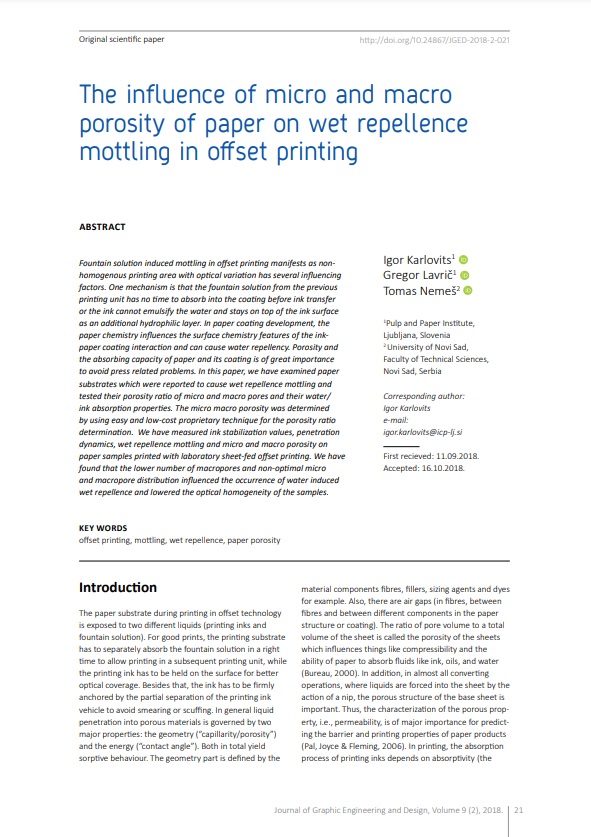The influence of micro and macro porosity of paper on wet repellence mottling in offset printing

Published 2018-12-01
abstract views: 40 // Full text article (PDF): 50
Keywords
- offset printing,
- mottling,
- wet repellence,
- paper porosity
How to Cite
Copyright (c) 2018 © 2018 Authors. Published by the University of Novi Sad, Faculty of Technical Sciences, Department of Graphic Engineering and Design. This article is an open access article distributed under the terms and conditions of the Creative Commons Attribution license 3.0 Serbia.

This work is licensed under a Creative Commons Attribution 3.0 Unported License.
Abstract
-
Fountain solution induced mottling in offset printing manifests as nonhomogenous printing area with optical variation has several influencing factors. One mechanism is that the fountain solution from the previous printing unit has no time to absorb into the coating before ink transfer or the ink cannot emulsify the water and stays on top of the ink surface as an additional hydrophilic layer. In paper coating development, the paper chemistry influences the surface chemistry features of the inkpaper coating interaction and can cause water repellency. Porosity and the absorbing capacity of paper and its coating is of great importance to avoid press related problems. In this paper, we have examined paper substrates which were reported to cause wet repellence mottling and tested their porosity ratio of micro and macro pores and their water/ ink absorption properties. The micro macro porosity was determined by using easy and low-cost proprietary technique for the porosity ratio determination. We have measured ink stabilization values, penetration dynamics, wet repellence mottling and micro and macro porosity on paper samples printed with laboratory sheet-fed offset printing. We have found that the lower number of macropores and non-optimal micro and macropore distribution influenced the occurrence of water induced wet repellence and lowered the optical homogeneity of the samples.


